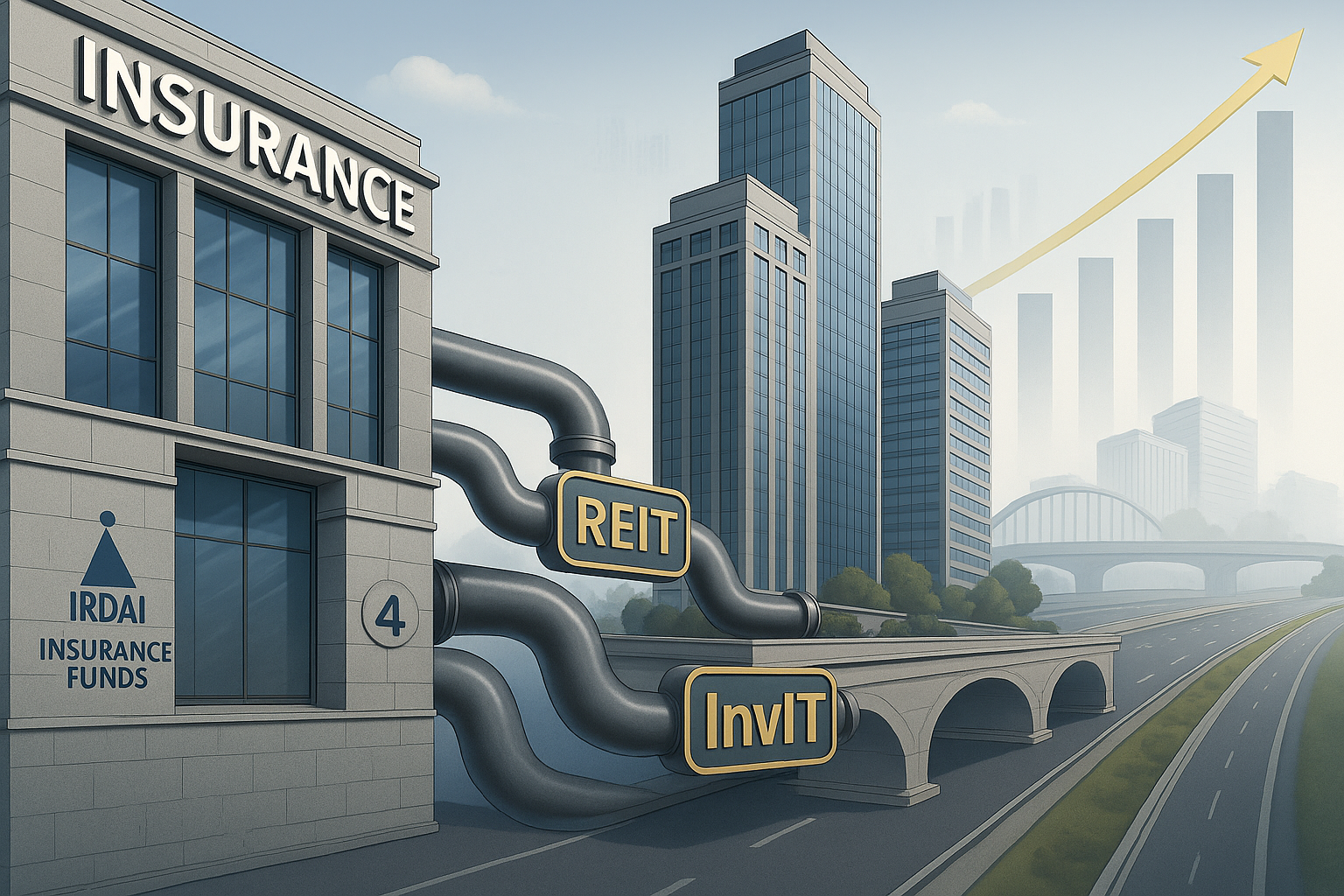In a significant development for India’s capital markets, the Insurance Regulatory and Development Authority of India (IRDAI) is reportedly considering relaxing investment norms to allow insurers greater exposure to REITs (Real Estate Investment Trusts) and InvITs (Infrastructure Investment Trusts).
This potential move, currently under discussion, could help channel long-term insurance capital into income-generating infrastructure and real estate assets, enhancing both sectoral growth and insurer returns.
What’s Changing?
At present, insurers face tight caps and restrictions on investing in REITs and InvITs, largely due to regulatory focus on safety and capital preservation. The proposed changes may:
Raise investment limits in such instruments
Offer greater flexibility in choosing sponsors and asset classes
Recognize REITs/InvITs as stable yield-generating options within the long-term portfolio mix
The IRDAI is in talks with industry stakeholders and may issue guidelines in the coming quarters, as part of a broader push to modernize the investment regime for insurers.
Why It Matters
With insurance companies managing over ₹58 lakh crore in assets, even a modest increase in their allocation toward REITs and InvITs could:
Deepen India’s capital markets
Provide much-needed patient capital to infrastructure developers
Diversify insurers’ investment portfolios beyond traditional G-Secs and corporate bonds
“We’re seeing a growing consensus that REITs and InvITs offer stable cash flows, inflation protection, and portfolio diversification—especially for long-term players like insurers,” said an official familiar with the matter.
Current Limitations
Under existing IRDAI rules:
Insurers can invest only a small percentage in REITs/InvITs
Investment is allowed only if sponsors meet specific net-worth and listing conditions
Regulatory definitions often restrict newer or smaller funds from qualifying
These norms have prevented meaningful deployment into a segment that’s otherwise gaining ground among mutual funds, pension funds, and even global sovereign investors.
Market Context
India currently has:
4 REITs (including Embassy, Mindspace, Brookfield, and Nexus)
Over 20 InvITs, across roads, power transmission, renewables, and telecom infrastructure
These platforms have been increasingly attracting institutional capital due to their transparency, governance norms, and regular cash distributions.
Expert View
CA Manish Mishra, insurance sector strategist:
“This move could unlock billions in long-term capital for infrastructure. The challenge is balancing yield with risk metrics, especially under solvency norms.”
CA Manoj Kumar Singh, financial markets advisor:
“For insurers, this could be a win-win. REITs and InvITs offer the predictability of annuity-like returns with the potential for capital appreciation. But regulatory clarity and sponsor due diligence will be key.”
Implications
For Insurers: Improved return potential, portfolio diversification, inflation-hedged assets
For Infrastructure Developers: New capital sources beyond banks and NBFCs
For Markets: Higher demand for REITs/InvITs may improve pricing, liquidity, and market depth
For Policy: Aligns with India’s infra financing goals under the National Infrastructure Pipeline (NIP)
Conclusion
As India looks to build out its urban and industrial backbone, unlocking insurance capital through modern investment instruments like REITs and InvITs could be a strategic step forward. With regulatory guardrails in place, this could well be a defining shift in how long-term capital is deployed in India’s evolving financial ecosystem.












